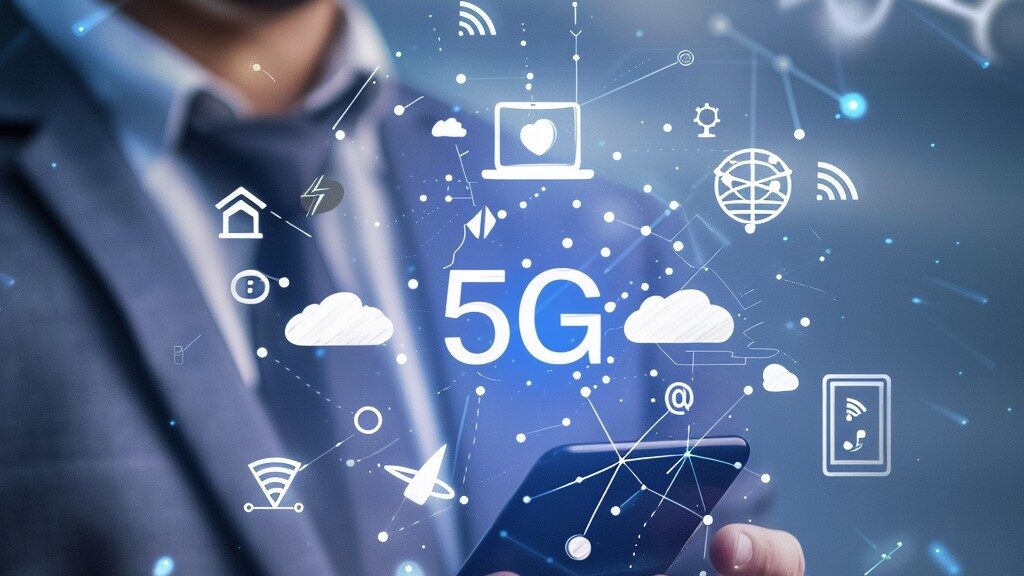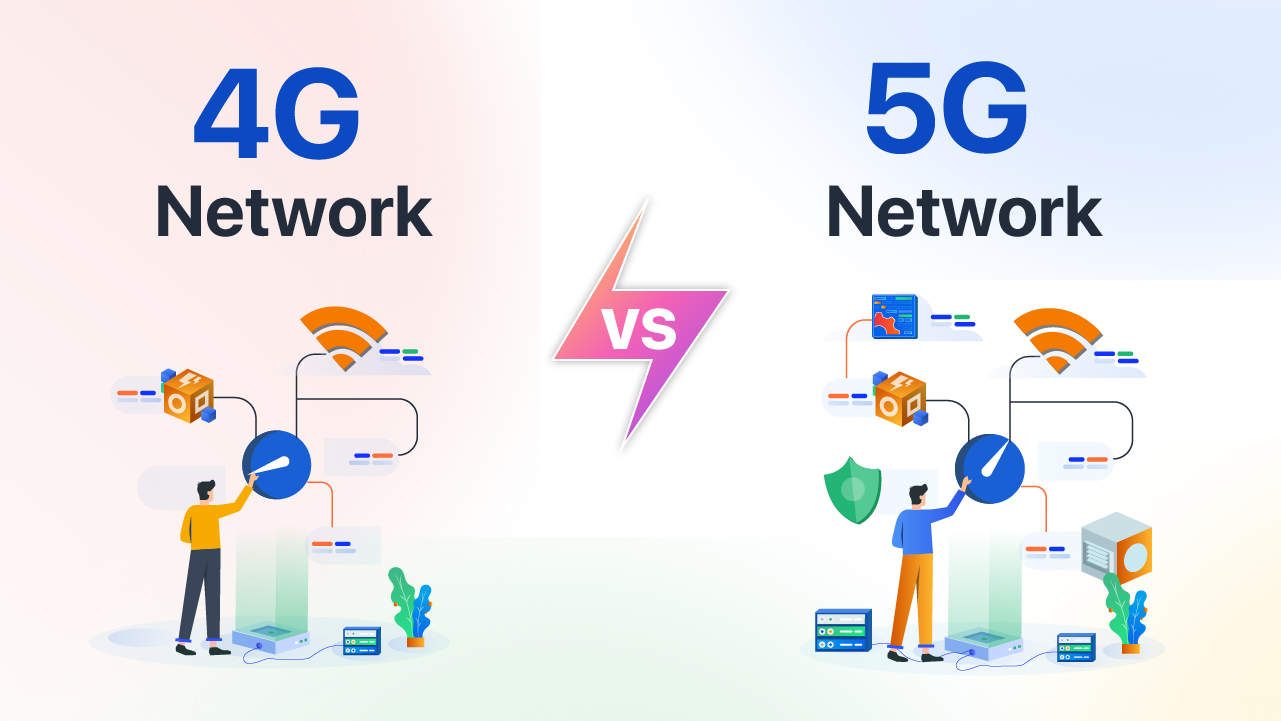What Is 5G? Everything You Need to Know About the Next-Gen Network. 5G is the fifth-generation wireless network technology designed to enhance the speed, capacity, and reliability of wireless communications. It’s expected to revolutionize industries by enabling ultra-fast data speeds, low latency, and seamless connectivity for smart devices, autonomous vehicles, and more. Here’s everything you need to know about 5G technology.
What Makes 5G Different from Previous Generations?
| Feature | 3G | 4G | 5G |
|---|---|---|---|
| Data Speed | Up to 2 Mbps | Up to 100 Mbps | 1-10 Gbps |
| Latency | 100-500 ms | 20-30 ms | 1-10 ms |
| Frequency Bands | 800 MHz | 700 MHz to 2600 MHz | Up to 100 GHz |
| Devices Supported | 1000 devices/km² | 100,000 devices/km² | 1 million devices/km² |
5G uses higher frequency bands, such as millimeter waves, which provide faster data rates and greater capacity. However, higher frequencies have shorter range, requiring more cell towers.
How 5G Works
5G technology utilizes multiple frequencies to deliver its advanced capabilities. It uses three main frequency bands:
- Low-band spectrum (Sub 1 GHz): Offers wide coverage but slower speeds. What Is 5G.
- Mid-band spectrum (1-6 GHz): Provides faster speeds and decent coverage.
- High-band spectrum (24 GHz and above): Delivers ultra-fast speeds but covers a smaller area, requiring dense infrastructure.
Key Benefits of 5G
- Faster Download and Upload Speeds: With 5G, you can download entire movies in seconds and enjoy seamless video streaming without buffering.
- Reduced Latency: The low-latency feature of 5G makes real-time applications like online gaming, virtual reality (VR), and autonomous driving smoother and more responsive.
- Improved Connectivity for IoT Devices: 5G can support an enormous number of devices simultaneously, from smart homes to connected factories.
- Network Slicing: 5G allows network slicing, where operators can create multiple virtual networks on a single physical network, optimizing services for specific use cases like healthcare, automotive, or entertainment.
Pros and Cons of 5G Technology
| Pros | Cons |
|---|---|
| Faster speeds – up to 10 times faster than 4G | Infrastructure challenges – requires more cell towers and investment |
| Low latency – near real-time responsiveness | Limited range – high-frequency waves have shorter ranges |
| Supports massive IoT devices | Expensive rollout – the cost of upgrading existing networks is high |
| Better energy efficiency | Device compatibility – not all devices are 5G ready |
| Enables new tech innovations | Security concerns – larger networks mean more potential points for attacks |
Applications of 5G
- Autonomous Vehicles: 5G will enable self-driving cars to communicate with each other and infrastructure in real-time, reducing the likelihood of accidents and improving traffic management.
- Healthcare: Remote surgeries and real-time patient monitoring will become more reliable due to 5G’s low latency and high bandwidth.
- Smart Cities: 5G will support the infrastructure for smart cities, including real-time data collection and analysis for improved public services, transportation, and utilities.
- Augmented Reality (AR) & Virtual Reality (VR): With higher speeds and low latency, 5G will enhance AR/VR experiences for entertainment, education, and training.
- Industrial IoT: Factories and industries will benefit from 5G through connected machinery, robotics, and automation systems that operate efficiently with minimal downtime.
Table of Contents
Challenges of 5G Deployment
Despite the many benefits, 5G deployment faces several challenges:
- Infrastructure Needs: The high-frequency millimeter waves used by 5G have a shorter range and are easily blocked by obstacles like buildings and trees, necessitating the construction of many more small cell towers.
- Cost: Building the necessary infrastructure for 5G networks, including new towers, antennas, and fiber optic cables, is expensive.
- Security Risks: As the number of connected devices grows, so does the attack surface for cybercriminals. Safeguarding 5G networks from cyberattacks will require stronger security measures.
5G in Business
5G will have a transformative impact on businesses by offering faster connectivity and improving operations. For example:
- Supply Chain Management: 5G will enhance supply chain visibility with real-time tracking and monitoring of shipments.
- Cloud Computing: Businesses can leverage faster 5G networks to access cloud services more efficiently, reducing latency in data transfers.
- Remote Work: 5G will make remote work more feasible by improving video conferencing, file sharing, and collaboration tools.
Conclusion
5G is more than just an upgrade to faster internet speeds—it’s a technological revolution that will reshape industries and everyday life. From autonomous vehicles and smart cities to faster mobile networks and improved connectivity for IoT devices, 5G is set to be a key driver of innovation in the years to come. However, challenges like infrastructure costs, security risks, and limited range need to be addressed for widespread adoption.
FAQs
1. When will 5G be fully rolled out?
5G is already available in many parts of the world, but complete global coverage will likely take several more years, with full deployment expected around 2025.
2. Is 5G safe?
Yes, 5G is safe. While concerns about the radiation emitted by 5G have surfaced, extensive research has not shown any adverse health effects.
3. Will 5G replace 4G?
Eventually, but for now, 4G and 5G will coexist, with 5G taking over as the dominant network as its infrastructure expands.
4. How fast is 5G compared to 4G?
5G is expected to be up to 100 times faster than 4G, with potential download speeds reaching up to 10 Gbps.
5. What are the main applications of 5G?
Key applications include autonomous vehicles, smart cities, enhanced mobile broadband, IoT connectivity, and remote healthcare services.



